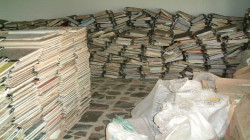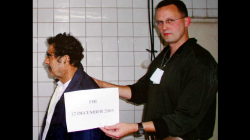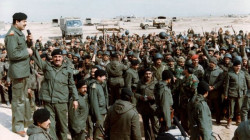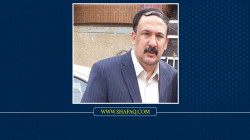17th anniversary of Saddam Hussein's hanging: Insights from the executioner
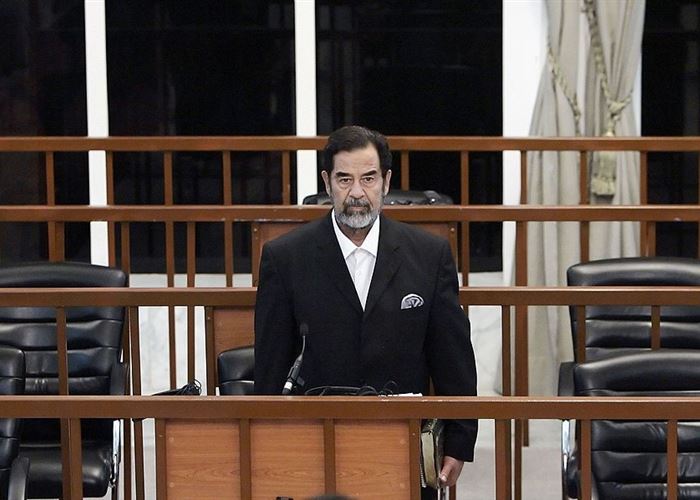
Shafaq News / "If it was not for me and al-Maliki... Saddam would not have been executed." This is how Judge Munir Haddad, who supervised the execution of former Iraqi President Saddam Hussein, speaks on this day, December 30, 2006, coinciding with the first day of Eid al-Adha back then.
Despite 17 years passing since Saddam's execution, his hanging remains a subject of controversy and debate. The circumstances surrounding his arrest and the execution order continue to conceal many truths. The event of his execution and the hangman's noose around his neck remain ingrained in the Iraqi and Arab memory, shrouded in a set of mysteries and secrets.
Judge Munir Haddad, who directly oversaw the execution, and who was the deputy head of the Appeals Court that approved the execution orders, spoke in detail to Shafaq News Agency about the pre-execution details involving Saddam Hussein. He discussed how Saddam was transferred from the investigative court to the criminal court that issued the death sentence against him.
An unexpected verdict
At the time, there were nine judges in the Appeals Court, two of whom explicitly stated, "We will not sign the death sentence." One of them traveled to Saudi Arabia, and the other to Erbil. As for the remaining seven judges, four, including Haddad, were in favor of executing Saddam's death sentence, while three judges leaned toward delaying the verdict for a considerable period. Eventually, after discussions, all seven judges signed the execution order.
Responding to a question about whether the judges who favored Saddam's execution were from a specific sect, Haddad affirmed that "the decision had nothing to do with Sunni or Shia sects, but rather a conviction emerged for his execution."
The Appeals Court's decision to approve Saddam Hussein and Awad al-Bandar's (president of the so-called Revolutionary Court) executions and to intensify the sentence for Taha Yassin Ramadan al-Jazrawi (Saddam Hussein's deputy), who was sentenced to life imprisonment in the Criminal Court, was accompanied by a request from the seven judges to tighten the sentence and execute him as well.
According to Judge Haddad, this request was sent to the Prime Minister at the time, Nouri al-Maliki, who in turn forwarded it to the President, Jalal Talabani. However, Talabani responded, "After the legal period passes, execution does not require a presidential decree."
Consequently, the Prime Minister's Office found a loophole with Judge Haddad, Nouri al-Maliki, and his office manager, Tariq Najm Abdullah, reaching an agreement to issue a ministerial order for the execution. As the head of the executive authority at that time, the Prime Minister signed the execution order on the 26th, and it was executed on the 30th of the same month.
Haddad and al-Maliki
Saddam Hussein was transferred to a prison that was once the headquarters of the former Military Intelligence Directorate in the Kadhimiya area of Baghdad to carry out his execution. The execution was supposed to be conducted by a misdemeanor judge from the Kadhimiya or an investigative judge.
However, at that time, the head of the Supreme Judicial Council, Midhat al-Mahmoud, refused to nominate a misdemeanor or investigative judge from the area. He stated that the judiciary is separate from the Iraqi High Criminal Court and therefore has no jurisdiction over this case, as conveyed by Judge Haddad.
The judges in the Iraqi High Criminal Court did not accept the execution of the death sentence against Saddam. Judge Haddad remarked, "Therefore, I personally took the responsibility and executed the sentence to achieve justice. Without me and without al-Maliki, Saddam Hussein would not have been executed."
Smuggling Saddam
According to Haddad, there was an attempt to smuggle Saddam out of prison by the late Libyan President Muammar Gaddafi. Libyan opposition published documents regarding this matter after the overthrow of Gaddafi. Additionally, an advisor to Gaddafi confirmed giving millions of dollars to Baathists to smuggle Saddam, stating that they received the money but did not do anything.
In this regard, Haddad pointed out that Gaddafi, in one of his speeches at an Arab summit, prophesied that they should not celebrate Saddam's execution because the fate of Arab leaders would be similar to Saddam's, and indeed, this prediction came true.
This attempt was not the only one to smuggle former regime leaders – as Haddad asserted – as there was also an attempt to smuggle Abd Hamoud (Saddam's personal secretary) by one of the employees for a deal of $25 million.
Al-Maliki's vengeance for Iraqis
On the other hand, Haider al-Lami, a leader in the State of Law Coalition led by Nouri al-Maliki, mentioned, "The day of December 30, 2006, was a historic day long-awaited by the Iraqi people due to what the previous regime, led by the tyrant Saddam, had inflicted on the land. He brought corruption, controlled the fate of Iraqis and the region, committing heinous crimes against Iraq and the whole area."
The Islamic Dawa Party, alongside other parties, as per al-Lami, played a significant role in confronting the Baath Party. They had the largest share of executions and intimidation throughout Saddam Hussein's rule.
He continued, "However, with the persistence of the leadership of the Islamic Dawa Party represented by Secretary-General Nouri al-Maliki, who faced all the challenges aimed at postponing the execution of the tyrant from that day, he signed the execution order. This act represented the revenge of all Iraqis who faced gallows and the lashes of Baathist executioners."
Crimes against humanity
Saddam was accused of committing several crimes against humanity during his quarter-century rule over Iraq (1979-2003), until he was ousted by the American invasion of the country.
Despite the Iraqi judiciary accusing Saddam of carrying out heinous crimes against humanity, particularly the massacres committed against the Kurds and Shiites, it was the assassination attempt against him in 1982 in the town of Dujail that led to his execution.
The Dujail massacre took place in the early 1980s in a town bearing that name north of Baghdad after an attack on the late president's convoy. The massacre resulted in the deaths of 143 individuals from the town's residents and the destruction of numerous properties.
Dictator and tyrant
In this context, historian Alaa Lazim Al-Eissa remarked, "The event of Saddam's execution was accompanied by a lot of local, Arab, and international controversy at the time. A significant part rejoiced at Saddam's execution because he was a tyrant and a criminal. His name evokes memories of mass graves and detentions. Just the mention of his name stirs fear and panic, as he stood as an epitome of dictatorship and tyranny."
Al-Eissa noted that "a portion of dissenters raised the suspicion of considering Saddam as a prisoner of war and the necessity of treating him differently to spare him from the death penalty."
He observed that "the swift execution of the verdict also divided opinions, as some expected this fate for Saddam while others were struck by disbelief. They had never imagined witnessing Saddam's execution in their lifetime."
A historic turning point
Researcher and academic Khalid Shati considered, "This day marks a significant historical turning point in seeking retribution from the tyrant of Iraq, who plunged this once-safe country into senseless wars and economic sieges that drained and impoverished it, despite its abundance of resources."
Shati emphasized that "the decision for execution was a fair retribution for the bloodshed of innocent scholars and youth, whom Saddam's machinery ground and scattered in the lakes as fish feed, silencing their voices not for any crime or wrongdoing, but under suspicion."
He continued, "We did not forget the dawn of that day, the first day of Eid al-Adha, which consoled the hearts of mothers, wives, and sisters who mourned the loss of their brothers, husbands, sons, and fathers. That day marked the impossibility of continuing injustice and the reign of oppressors, regardless of how long they might persist, for their fate will be at the mercy of an oppressive authority."
Shati added, "That date never faded from our memories, we, the political prisoners, whose youth was spent in detention centers and prisons, witnessing our dreams shatter under their oppression and torture tools. However, we witnessed a just conclusion for that criminal and his regime."
Speech by Raghad Saddam
On the anniversary of her father's execution, Raghad Saddam Hussein delivered a speech posted X, "Today marks the anniversary of the execution of my father, President Saddam Hussein, a day commemorated by many freedom-loving people worldwide. My father maintained the dignity of Iraq and Iraqis until his final moments, remaining a steadfast believer, preserving all his values and principles."
She continued, "Today, the lies of America, the West, and the Persian ambitions in the Arab land without exception, has become clear to everyone. This direction was clear and comprehensible to Iraq, and we fought a long war against them, Saddam's Qadisiyah for eight years where Iraqis sacrificed much, defending their land and nation. Some criticized that war and that stance, until Iraq was ruled after 2003 by the Persian doctrine and upbringing, leaving the Iraqi arena empty of all notions of dignity and freedom."
She added, "Today, I address the Arab brethren in positions of authority, urging them not to leave room for any traitor who acts as a historical hero, like the coward who handed the President over to the occupier for a handful of dollars, which some weak souls used to buy allegiances. All of this is detailed in the memoirs of President Saddam in his handwriting regarding the family of the traitor."
Operation Red Dawn
Operation "Red Dawn" refers to the military operation conducted by the United States that led to the capture of Saddam Hussein. It occurred on December 13, 2003, in the town of ad-Dawr in Saladin governorate.
Saddam Hussein had gone into hiding shortly after the invasion of Iraq in 2003. The US Army described him as "the number one high-value target", initiating one of the largest manhunts in history.
Saddam Hussein was found hiding in a small underground bunker in northern ad-Dawr at around 20:30 local time in Iraq, and he was captured without resistance.
Previously the chief defense attorney for the late president, Khaleel al-Dulaimi, revealed in a televised interview some of what he heard from Saddam Hussein while in prison and during his trial. He mentioned that Saddam Hussein was not hiding in a hole as rumored but rather in a fortified shelter seeking protection from airstrikes.
Al-Dulaimi also disclosed that the filming of Saddam Hussein's execution was carried out by Miryam Al-Rais (a former advisor to the Iraqi government) and Muwaffaq al-Rubaie (a former National Security Advisor in Iraq). He confirmed that the number of knots in the hangman's noose matched the number of missiles Saddam launched at Israel.
It is noteworthy that 20 years have passed since the announcement by US President George W. Bush on March 20, 2003, of the invasion of Iraq, also known as "Operation Iraqi Freedom". Approximately 150,000 American troops and 40,000 British troops were deployed to Iraqi territory following that operation.
Three weeks later, on April 9 of the same year, the Baathist regime fell, and Saddam went into hiding for eight months before being found by US forces. He was subsequently tried and executed on the morning of December 30, 2006.
